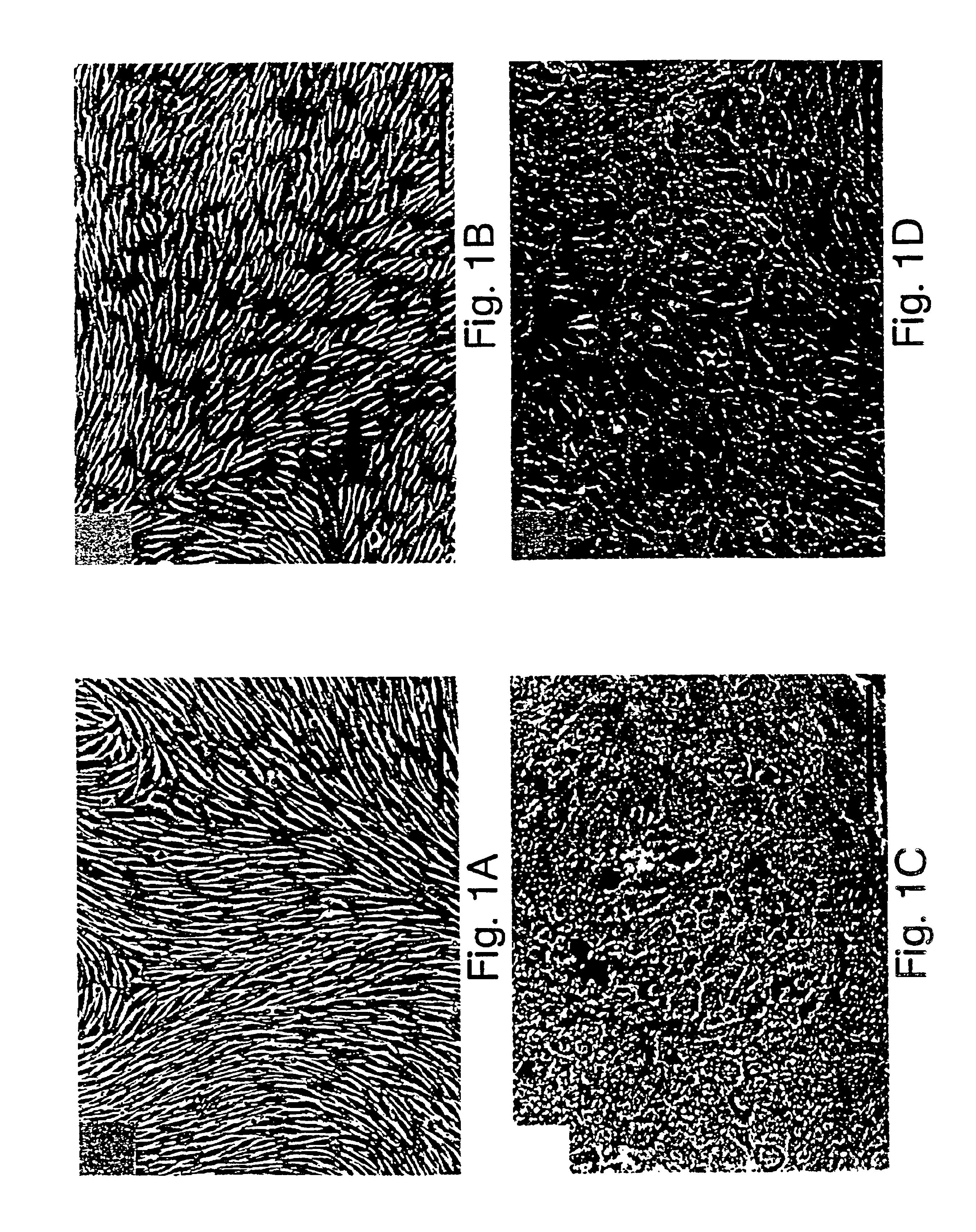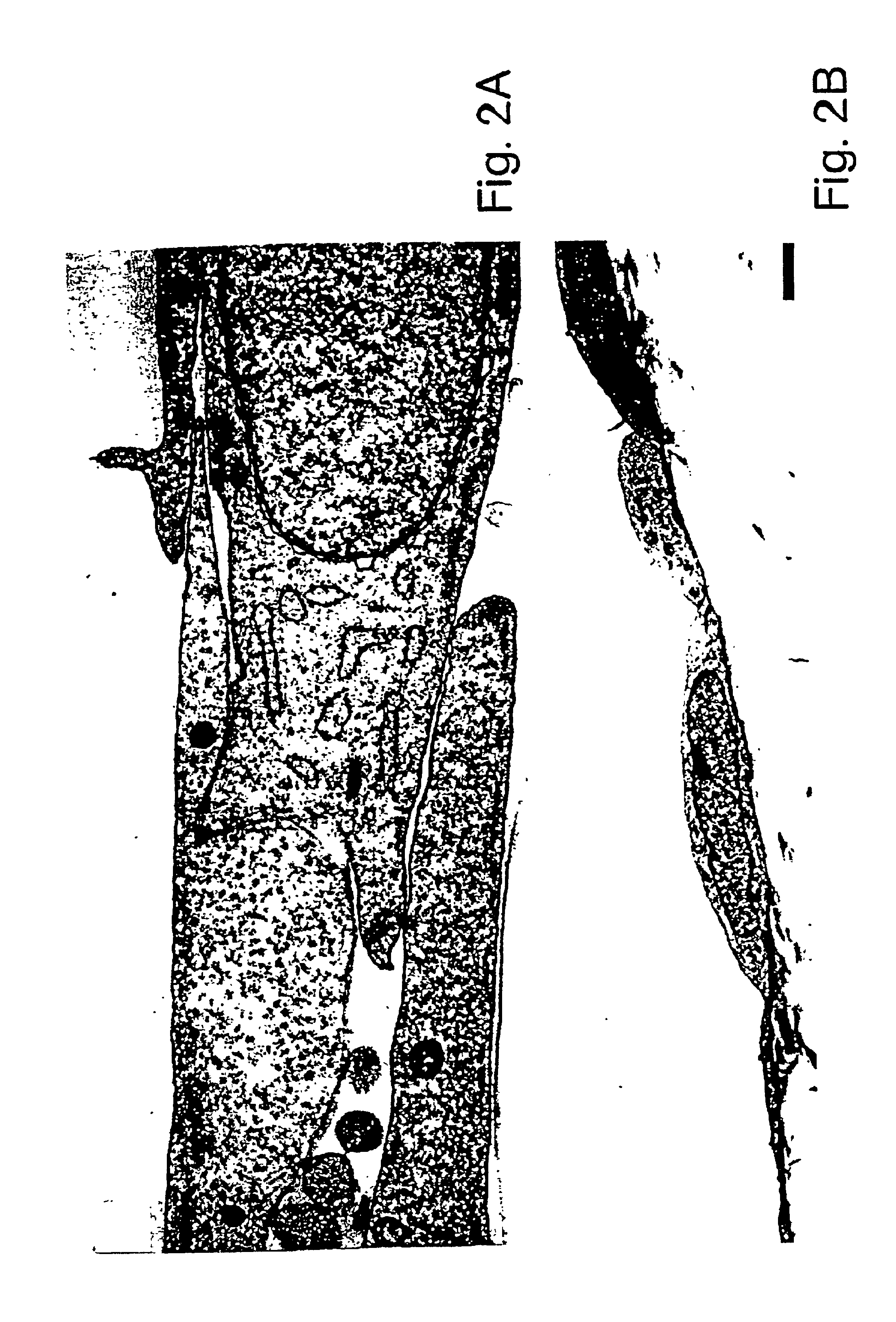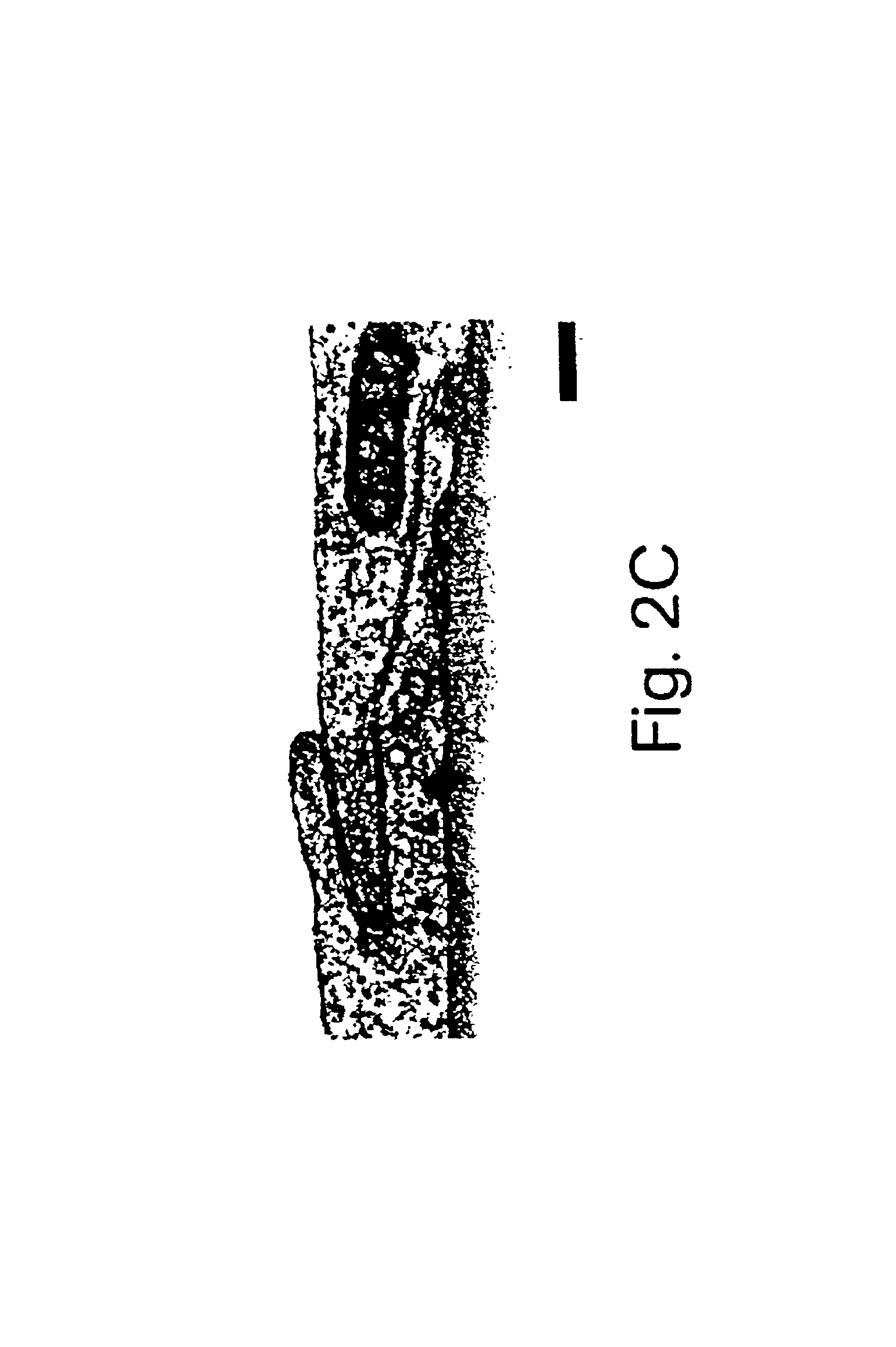Retinal cell lines with extended life-span and their applications
a technology of retinal cells and life-span, applied in the field of new cells with extended life-span of retinal origin, can solve problems such as rejection reactions, and achieve the effect of prolonging life-span and being better able to meet practical needs
- Summary
- Abstract
- Description
- Claims
- Application Information
AI Technical Summary
Benefits of technology
Problems solved by technology
Method used
Image
Examples
example 1
Methods Used to Characterize the Cells of the Invention
(a) Isolation and culture of rat aortic endothelial cells. The aortic endothelium was isolated by the method described by McGuire et al., 57 Lab. Invest. 94-105 (1987). The rat aorta was removed by dissection and cut into small pieces (2-5 mm), which were placed on 24-well plates coated with collagen and containing an endothelial cell culture medium, in such a way that the luminal face of the pieces of aorta was in contact with the collagen. The RPMI culture medium was supplemented with 20% fetal calf serum, 7.5 μg / ml endothelial cell growth supplement, 80 μg / ml heparin, 2 mM glutamine, 0.5 μg / ml vitamin C, 100 U / ml penicillin, and 100 μg / ml streptomycin.
After 3 days, the explants were removed and the adhering cells were proliferated to the point of confluence. At confluence, the cells had a pavement morphology characteristic of the endothelial vessels, expressed Von Willebrand's factor, and proliferated in a medium containing D...
example 2
Preparation of a Line According to the Invention
Rat Retinal Endothelial Cells
(a) Isolation and culture of the retinal endothelial cells. Endothelial cells were derived from 4- to 6-week-old female Lewis rats free of pathogens. The retinal cells were isolated and cultivated by the methods described by Greenwood, 39 J. Neuroimmunol. 123-132 (1992) and Abbott et al., 103 Cell Sci. 23-37 (1992). These techniques produced primary cultures with a purity in excess of 95%. The rat retinas were dispersed by enzymatic digestion, the fragments of microvessels were separated from the cells themselves by centrifugation and the cells were washed and cultured in flasks coated with collagen. The growth medium consisted of Ham's F-10 medium (Sigma, St. Louis, Mo.) supplemented with 17.5% serum (Advanced Protein Products Ltd.); 7.5 μg / ml of endothelial cell growth supplement (Advanced Protein Products Ltd.); 80 μg / ml of heparin, 2 mM glutamine; 0.5 μg / ml of vitamin C; 100 U / ml of penicillin; and 100 ...
example 3
Preparation of a Line According to the Invention
Rat Retinal Epithelial Cells
(a) Isolation and culture of the retinal pigment epithelial cells. The rat retinal pigment epithelial cells were isolated from 6-day to 8-day old PVG rats according to the method of Chang et al., 10 Curr. Eye Res. 1081-1086 (1991). The eyes were removed and the intact eyeballs were digested with 2% dispase for 30 min. The eyes were then dissected for removal of the cornea and the vitreous body. The dissected retina was then isolated and incubated for 15 min in a culture medium. After incubation, layers of retinal pigment epithelial cells were separated from the neuroretina and treated with trypsin to produce a cellular suspension. The cells were plated in tissue culture flasks and cultivated to the point of semiconfluence. The culture medium consisted of Ham's F-10 medium supplemented with 20% fetal calf serum, 20 mM HEPES, 7.5% sodium bicarbonate, 2 mM glutamine, 100 U / ml of penicillin and 100 μg / ml of stre...
PUM
| Property | Measurement | Unit |
|---|---|---|
| time | aaaaa | aaaaa |
| pH | aaaaa | aaaaa |
| pH | aaaaa | aaaaa |
Abstract
Description
Claims
Application Information
 Login to view more
Login to view more - R&D Engineer
- R&D Manager
- IP Professional
- Industry Leading Data Capabilities
- Powerful AI technology
- Patent DNA Extraction
Browse by: Latest US Patents, China's latest patents, Technical Efficacy Thesaurus, Application Domain, Technology Topic.
© 2024 PatSnap. All rights reserved.Legal|Privacy policy|Modern Slavery Act Transparency Statement|Sitemap



